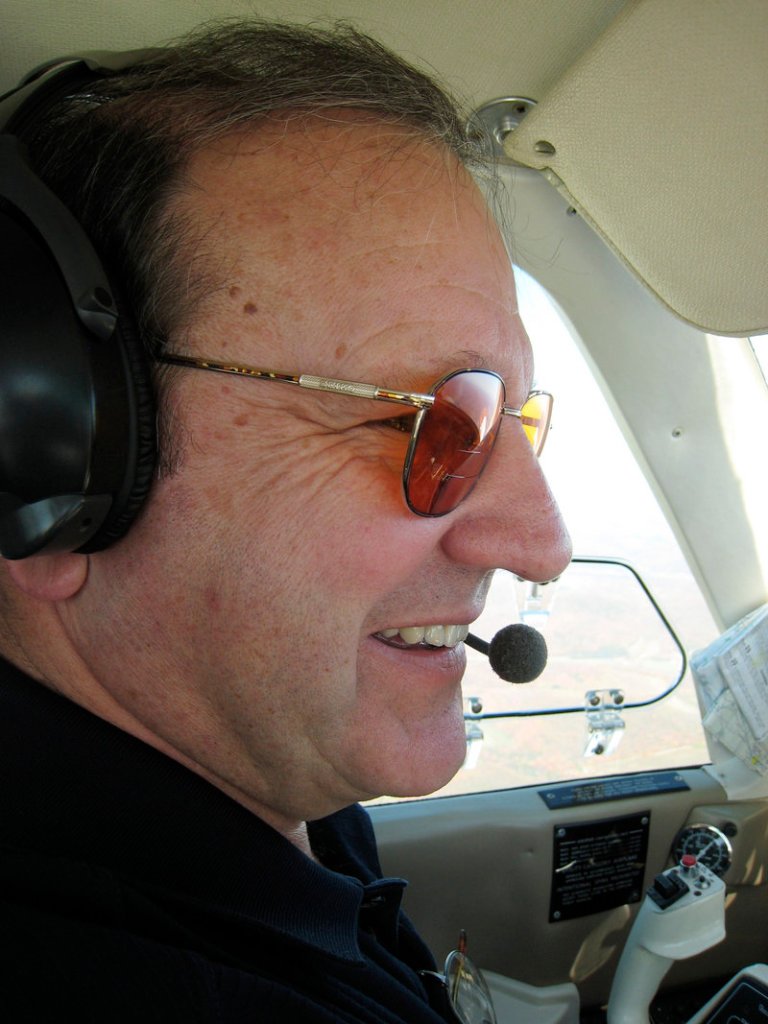CHICAGO – Airline pilot Denny Fitch was hitching a ride home on a DC-10 in 1989 when heard an explosion somewhere in the back of the jet. He soon made his way to the cockpit to see if the crew needed help.
Inside, he found three men desperately trying to keep the giant plane in the air after losing all hydraulic power needed to control direction and altitude. Fitch took a seat in the only space available — the floor — and helped operate some of the only equipment still working — the wing engines — to try to land the aircraft carrying nearly 300 people.
Fitch, who died Monday at 69, used everything he knew about flying to confront an emergency that engineers never imagined could happen to a modern jet.
When the crippled plane crash-landed in Sioux City, Iowa, more than half of the passengers survived — one of the most admired life-saving efforts in aviation history.
After the accident, aviation experts conducted simulations in which test pilots and trainer pilots tried to land similarly stricken aircraft.
“I’m not aware of any that replicated the success these guys had,” said Mike Hamilton, a United pilot who flew with Fitch. None of the simulator pilots were able to make a survivable landing.
Fitch, who had suffered from brain cancer, died at his home in the Chicago suburb of St. Charles.
His role began with a small, seemingly meaningless decision he never understood: to get on Flight 232 instead of another flight scheduled to depart five minutes earlier.
Sitting in a window seat in the last row of first class, Fitch had just finished his lunch and asked the flight attendant for a cup coffee.
Suddenly, the explosion spilled his coffee. As an instructional pilot, he had just spent days training fellow airmen for every conceivable kind of problem — hydraulic failure, immovable flaps, fires and more. He tried to assure a worried flight attendant that everything was going to be fine.
The engine in the plane’s tail had exploded, sending chunks of metal into the jet’s three hydraulic systems. What the crew knew was this: The only thing they could do was turn right by using the engines to vary the amount of thrust on each side.
So for more than 40 minutes, the aircraft flew in circles as it aimed for the Sioux City airport. Al Haynes, the captain who understood as well as anyone the danger of the situation, asked air traffic controllers to keep the jet away from the city.
In an interview for a documentary about the crash, Fitch talked about how his life, anybody’s life, can change in an instant.
“What makes you so sure you’re going to make it home tonight?” he said. “I was 46 years old the day I walked into that cockpit. I had the world ahead of me. I was a captain on a major U.S. airline. I had a beautiful healthy family, loving wife, great future. And at 4 o’clock I’m trying to stay alive.”
Circling above the cornfields, the pilots knew the difficulty of their task. Without the flight-control systems, their landing would be about twice the normal speed.
Just above the runway, the right wing plowed into the ground, sending the jet into a terrifying cartwheel and tearing the fuselage into three chunks as it skidded across the pavement into a cornfield — a scene that was captured on video.
Most of those who were killed were in the first-class area where Fitch had been seated before he went to the cockpit.
Fitch suffered several broken bones, a punctured lung and other injuries that required nine operations, his wife, Rosa, said.
The emotional scars were even deeper.
“To find out that 112 people didn’t make it, that just about destroyed me,” he once said.
Fitch became a motivational speaker, who advised others to let their family and friends know how much they’re loved.
Send questions/comments to the editors.



Success. Please wait for the page to reload. If the page does not reload within 5 seconds, please refresh the page.
Enter your email and password to access comments.
Hi, to comment on stories you must . This profile is in addition to your subscription and website login.
Already have a commenting profile? .
Invalid username/password.
Please check your email to confirm and complete your registration.
Only subscribers are eligible to post comments. Please subscribe or login first for digital access. Here’s why.
Use the form below to reset your password. When you've submitted your account email, we will send an email with a reset code.